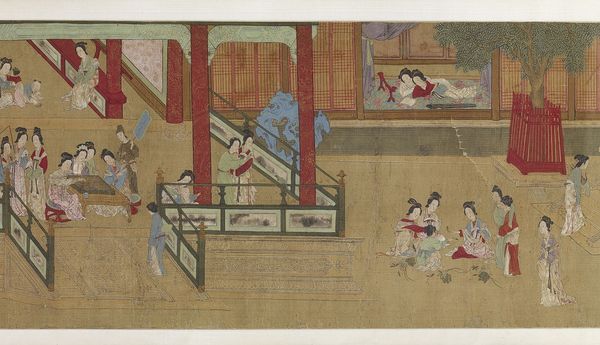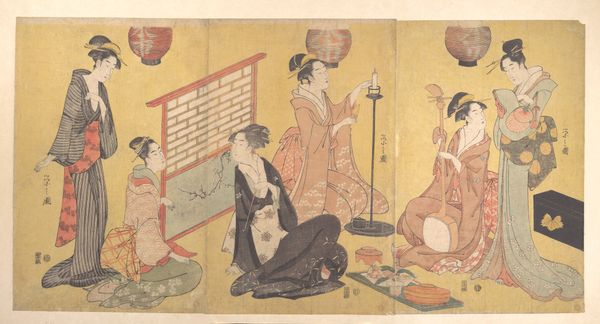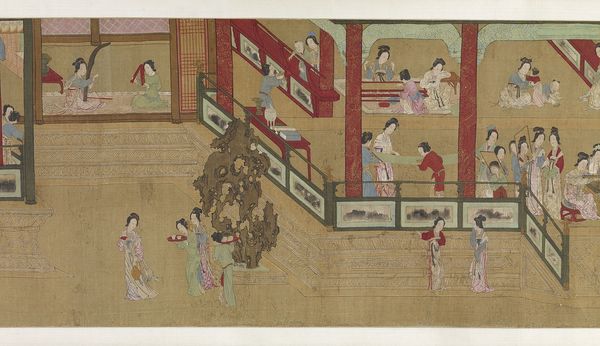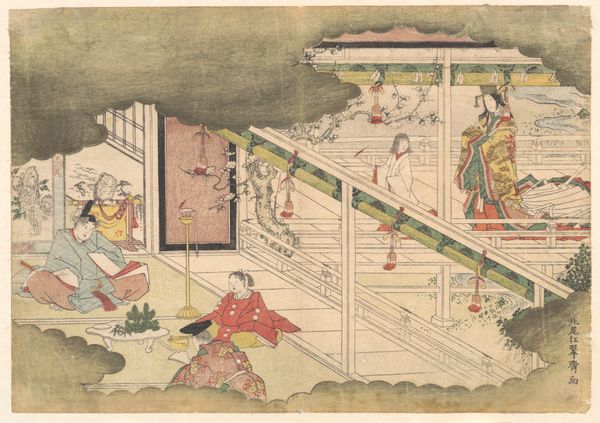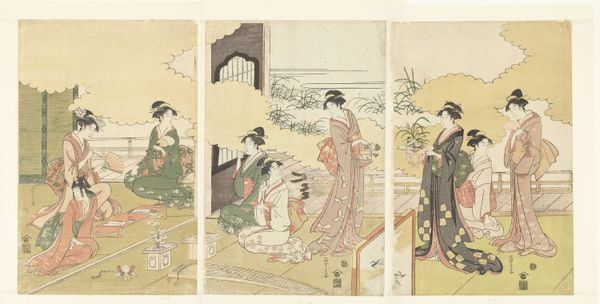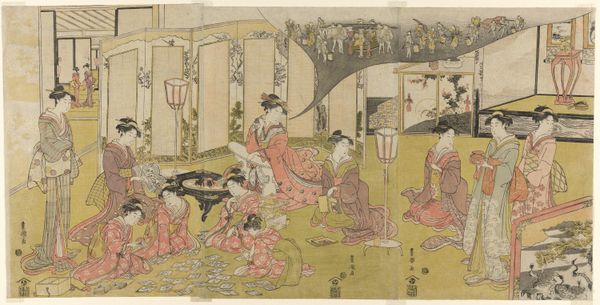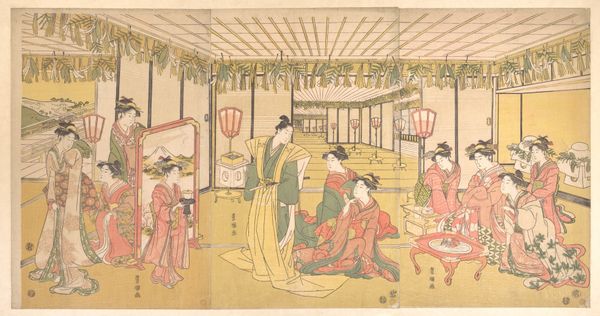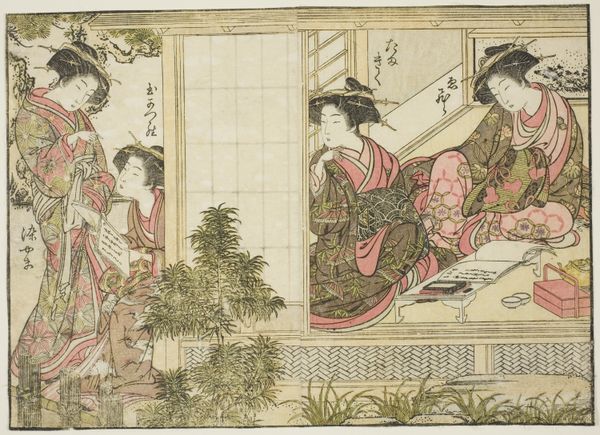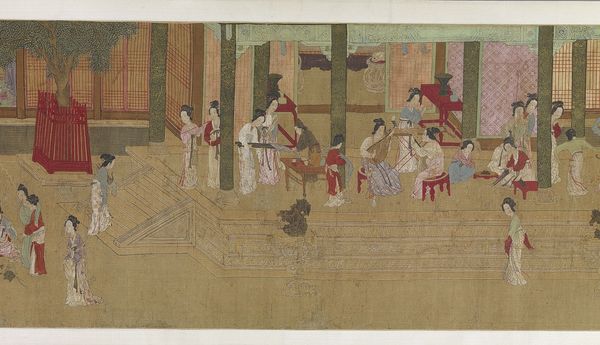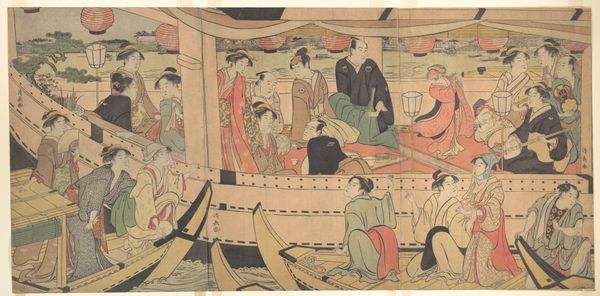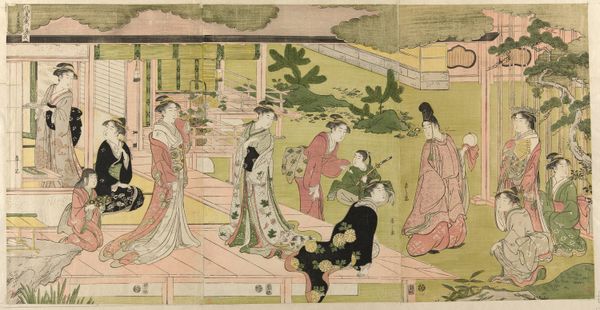
watercolor
#
portrait
#
water colours
#
asian-art
#
ukiyo-e
#
japan
#
watercolor
#
coloured pencil
#
traditional style
#
genre-painting
Dimensions: 11 3/8 × 259 3/4 in. (28.89 × 659.77 cm) (image)11 3/8 × 276 15/16 in. (28.89 × 703.42 cm) (mount)
Copyright: Public Domain
Editor: So here we have "Scenes from the Pleasure Quarters," a watercolor piece by \u014coka Michinobu from around the 18th century. I'm immediately struck by how public it feels, even though it depicts a very private setting. What aspects of the social context of Edo-period Japan do you think are most relevant when we consider a piece like this? Curator: It's interesting you mention that contrast, the public performance of private life. These pleasure quarters were complex spaces, central to the Edo period's social and economic structure. This wasn’t simply about sex; it was a nexus of art, fashion, and social interaction. These women, often from impoverished backgrounds, wielded surprising cultural influence. How does Michinobu represent them, do you think? Does he highlight their agency, or does he simply exoticize them? Editor: Hmm, I see both. The figures are very stylized, almost like dolls, which could read as objectifying. But at the same time, they're depicted engaging with men and women in diverse interactions. It feels almost… observational, less judgmental? Curator: Precisely. This genre, ukiyo-e, literally translates to "pictures of the floating world." And what is this floating world reflecting? Perhaps a release from the rigid social hierarchies enforced elsewhere. Were these quarters offering spaces for negotiating class, gender, and even personal identity, at least temporarily? The art certainly invites us to think so. Editor: That’s a fascinating take! I never considered these paintings as potential social commentaries before. Curator: Well, now you can look at similar works, perhaps focusing on clothing or the relationships between genders represented, with these questions in mind. It will open up even richer discussions on societal structure and commentary. Editor: Definitely. It's given me a whole new way to consider Ukiyo-e. Thanks for the insight!
Comments
minneapolisinstituteofart about 2 years ago
⋮
This handscroll shows a number of scenes from the Yoshiwara, the designated red-light district in the capital Edo (now Tokyo). As the scroll is unrolled from right to left, the viewer gains an increasingly internal perspective on the rarefied world of the Yoshiwara’s brothels, from the initial boat ride toward to the district, to views of lower-class brothels, and finally to the interior spaces of an elite brothel in the final scene. Ōoka Michinobu was a disciple of the ukiyo-e painter Ōoka Shunboku (1680–1763) active primarily in the city of Ōsaka.
Join the conversation
Join millions of artists and users on Artera today and experience the ultimate creative platform.
